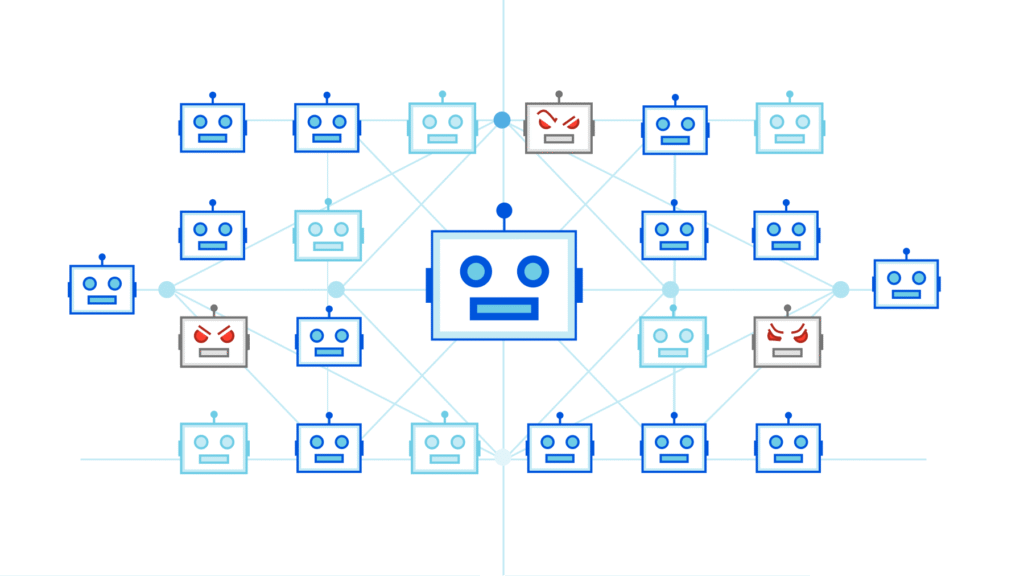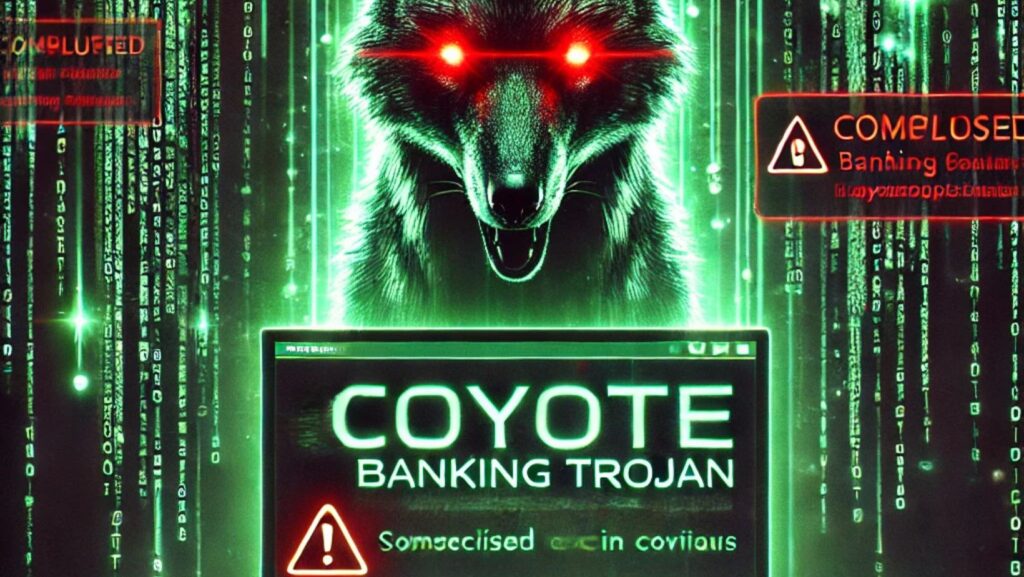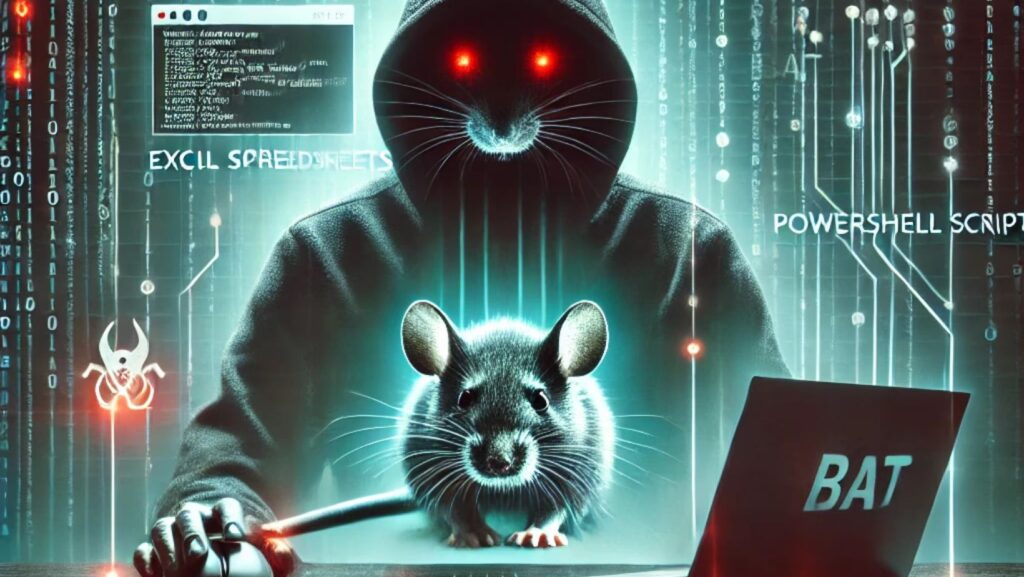Kali GPT – The AI Assistant Revolutionizing Penetration Testing on Kali Linux

The cybersecurity world is evolving at lightning speed. With new vulnerabilities being discovered daily, penetration testers need tools that are faster, smarter, and easier to use. That’s where Kali GPT, the AI-powered assistant integrated with Kali Linux, enters the game. Designed to simplify penetration testing and accelerate ethical hacking processes, Kali GPT is quickly becoming an essential tool in the cybersecurity toolkit. What is Kali GPT? Kali GPT is an AI assistant built specifically for penetration testing on the powerful Kali Linux platform. It leverages advanced Natural Language Processing (NLP) to understand human commands and translate them into actionable tasks using Kali’s pre-installed security tools. Imagine telling your system: “Scan this domain for vulnerabilities” and watching it launch tools like Nmap, Nikto, and SQLMap without you typing a single complex command. That’s the magic of Kali GPT. Why Kali GPT is a Game-Changer Traditional penetration testing demands extensive knowledge of syntax, tools, and manual configurations. Even experienced ethical hackers spend hours switching between scripts and software. Kali GPT changes this by offering: By allowing users to interact with Kali Linux like they would with a chatbot, Kali GPT removes the steep learning curve, making cybersecurity more accessible. Top Features of Kali GPT 1. AI-Driven Vulnerability Scanning Kali GPT integrates with well-known tools like Nmap, Nikto, and OpenVAS. Instead of memorizing complex command-line arguments, users can run scans using plain language prompts. 2. Exploitation Recommendations Once vulnerabilities are found, Kali GPT can recommend possible exploits by cross-referencing known CVEs using SearchSploit and integrating with Metasploit. 3. Command Simplification Not everyone remembers how to launch an ARP spoofing attack or brute force a login. Kali GPT understands requests like “Try cracking this hash using a wordlist” and executes the relevant commands. 4. Seamless Tool Integration It works smoothly with tools like Hydra, Burp Suite, John the Ripper, and Aircrack-ng, letting professionals run complex operations with minimal effort. 5. Auto-Generated Reports Creating reports manually is time-consuming. Kali GPT auto-generates professional reports that include scan results, screenshots, recommendations, and timestamps—perfect for clients or security teams. Getting Started with Kali GPT To install Kali GPT on your Kali Linux machine, a simple command like the following may be all it takes (depending on your version): bashCopyEditsudo apt update sudo apt install kaligpt It’s recommended to have at least 4GB of RAM and Python 3.8+ installed. Once set up, you can immediately begin issuing natural language commands like: Use Cases for Ethical Hackers Whether you’re a beginner in ethical hacking or a seasoned pentester, Kali GPT has something to offer. Security and Ethical Concerns Like any tool, Kali GPT should be used responsibly. Because it’s powerful and automates tasks quickly, it’s important to ensure you have permission before performing any tests. Kali GPT is designed for ethical hacking and authorized penetration testing only. Security is taken seriously — with offline usage supported, data is kept on the device, and all interactions are sandboxed to avoid system interference or leaks. The Future of Penetration Testing AI in cybersecurity is no longer a concept — it’s a reality. Kali GPT is part of a larger movement toward AI-enhanced penetration testing, where tools become smarter, faster, and more intuitive. In the near future, we might see AI assistants capable of predicting zero-day vulnerabilities or dynamically adapting testing strategies in real time. Kali GPT sets the stage for that future, making cybersecurity operations more efficient and inclusive. Final Thoughts Kali GPT represents a massive leap forward for ethical hacking. By combining the raw power of Kali Linux with the intelligence of AI, it simplifies complex tasks, enhances productivity, and empowers both new learners and seasoned professionals. Whether you’re scanning for vulnerabilities, testing web applications, or preparing security reports, Kali GPT saves time and delivers results. It’s more than just a tool — it’s your AI companion in cybersecurity. FAQs 1. Is Kali GPT suitable for beginners? Absolutely. It simplifies everything by using natural language. Beginners can start learning cybersecurity without needing deep command-line knowledge. 2. Does Kali GPT replace human ethical hackers? No. It assists rather than replaces. Human decision-making and creativity remain crucial in ethical hacking. 3. Is Kali GPT free to use? A community edition is generally available for free. Premium features may require a subscription in future versions. 4. Do I need to be connected to the internet to use Kali GPT? Most functions can run offline, but cloud-based features and updates will need an internet connection. 5. Can I trust Kali GPT with sensitive data? Yes, as long as you follow best practices. Always use it in secure environments with authorized targets.
Crocodilus Malware: The New Android Threat That Grants Full Control to Hackers

Crocodilus is a newly discovered Android malware that acts as a Remote Access Trojan (RAT). Once installed, it silently gives cybercriminals complete control over your device, allowing them to steal data, monitor activity, and manipulate apps all without your knowledge. First spotted in early 2025, it spreads through fake apps disguised as utility tools or financial services. How It Infects Devices This malware typically hides inside trojanized apps available on third-party websites and sometimes even sneaks into official app stores. Once installed, it tricks users into granting powerful permissions like Accessibility and Device Admin, which are then used to take control of the device. What Permissions Does It Exploit? Crocodilus targets: These permissions enable the malware to completely override user control, posing as the user and interacting with the device in real time. How It Steals Your Data Once active, Crocodilus uses: It exfiltrates data such as: Why It’s Dangerous Unlike many other Android threats, Crocodilus is designed to stay hidden and persistent. It hides its icon, disables security apps, and reinstalls itself after deletion attempts. Its reach is global, with infections reported across Asia, Europe, and North America. Real Incidents How to Protect Yourself How Crocodilus Compares to Other Android Malware While malware like Joker or BRATA target Android users too, Crocodilus stands out by offering a full suite of surveillance and control tools. Where other malware might steal data or bombard users with ads, Crocodilus acts like a digital puppet master watching, stealing, and manipulating everything silently. Here’s how it compares: Malware Key Focus Remote Control Overlay Attacks Self-Reinstallation Joker SMS fraud, ads ❌ ❌ ❌ BRATA Banking data ✅ ✅ ✅ Crocodilus Full control & data theft ✅ ✅ ✅ Crocodilus combines the worst traits of multiple malware families, making it more dangerous and persistent than most mobile threats. Implications for Users and Developers For users, Crocodilus is a wake-up call. Mobile security isn’t optional anymore. It’s essential. We carry our entire lives on our phones banking apps, crypto wallets, work files, social accounts, personal memories. Malware like Crocodilus aims to steal all of it. For developers and app platforms like Google Play, it emphasizes the need for stricter app screening, better user education, and proactive threat mitigation systems. What’s Next: The Future of Mobile Threats Crocodilus might be the latest Android malware but it won’t be the last. Cybercriminals are getting smarter, and mobile operating systems need to evolve faster to stay ahead. Experts expect newer variants to become even more: Users should expect more sophisticated phishing campaigns, fake system prompts, and trojanized apps—disguised in ways we haven’t seen before. Conclusion Crocodilus malware marks a new chapter in Android threats one where attackers don’t just steal data, but completely take over your phone. With the ability to hide, adapt, and persist, it’s a wake-up call to Android users everywhere. Stay vigilant, review your security practices, and always think twice before granting an app too much control. FAQs 1. Can Crocodilus infect iPhones?No, it currently targets Android devices only. 2. How do I know if I’m infected?Unusual behavior, battery drain, or denied access to security settings can be signs. 3. Can factory reset remove it?Not always. Some versions reinstall themselves unless professionally cleaned. 4. Is Play Store safe from this malware?Mostly, but occasional infected apps have slipped through. Always verify app sources. 5. What’s the best defense?Avoid third-party apps, check permissions, and use a reputable mobile security app.
Mirai IoT Botnet

Understanding the Mirai IoT Botnet Introduction to IoT Botnets The Internet of Things (IoT) has revolutionized the way we interact with technology, connecting everyday devices like cameras, thermostats, and refrigerators to the internet. While this connectivity offers convenience, it also introduces significant security vulnerabilities. One of the most notorious examples of exploiting these vulnerabilities is the Mirai botnet, which harnessed the power of compromised IoT devices to launch massive cyberattacks. What is an IoT Botnet? An IoT botnet is a network of internet-connected devices infected with malicious software and controlled as a group without the owners’ knowledge. These devices, often with minimal security measures, can be co-opted to perform coordinated tasks such as Distributed Denial of Service (DDoS) attacks, data theft, or spam distribution. The Mirai botnet exemplifies the potential scale and impact of such networks. The Rise of IoT Devices and Security Gaps The proliferation of IoT devices has outpaced the implementation of robust security protocols. Many devices are shipped with default usernames and passwords, which users often neglect to change. Additionally, manufacturers may not provide regular software updates, leaving devices vulnerable to known exploits. These security gaps create an environment ripe for exploitation by malware like Mirai. Origins of the Mirai Botnet The Mirai botnet emerged in 2016, developed by three college students: Paras Jha, Josiah White, and Dalton Norman. Initially intended to gain an advantage in the Minecraft gaming community by overwhelming competitors’ servers, Mirai quickly evolved into a tool capable of launching unprecedented DDoS attacks. The creators released the source code publicly, leading to widespread adoption and adaptation by other malicious actors. Timeline of Mirai’s Initial Attacks These attacks highlighted the vulnerabilities inherent in IoT devices and the potential for widespread disruption. How the Mirai Botnet Works Mirai operates by scanning the internet for IoT devices with open Telnet ports (23 and 2323) and attempting to log in using a list of common default credentials. Once access is gained, the malware infects the device, turning it into a “bot” that can receive commands from a central server. The botnet can then be directed to launch DDoS attacks, overwhelming targeted servers with traffic. Default Credentials Exploitation A critical factor in Mirai’s success was its exploitation of default credentials. Many IoT devices are shipped with factory-set usernames and passwords, such as “admin/admin” or “user/1234,” which users often fail to change. Mirai’s hardcoded list of over 60 such credentials allowed it to rapidly compromise a vast number of devices. Command and Control (C&C) Infrastructure Infected devices communicate with a Command and Control (C&C) server, which issues instructions for scanning, infection, and launching attacks. This centralized control structure enables coordinated actions across the botnet. Some variants of Mirai have adopted decentralized models to evade detection and takedown efforts. Major Attacks Launched by Mirai Technical Anatomy of Mirai Mirai’s codebase is relatively simple and modular, written in C for the bot and Go for the controller. Its lightweight design allows it to run on devices with limited processing power. The malware includes components for scanning, brute-force login attempts, and executing various types of DDoS attacks, such as TCP, UDP, and HTTP floods. Propagation Techniques Mirai spreads by continuously scanning IP ranges for devices with open Telnet ports. Upon finding a target, it attempts to log in using its list of default credentials. Successful logins result in the device being infected and added to the botnet. The malware also removes competing malware and disables remote administration to maintain control over the device. Botnet Lifecycle Management The lifecycle of a Mirai-infected device includes: Variants and Evolution of Mirai Since the release of its source code, numerous Mirai variants have emerged, each with unique features: These variants demonstrate the adaptability of Mirai’s code and the ongoing threat it poses. Global Impact and Case Studies These incidents underscore the botnet’s capacity to affect various sectors and geographies. Legal Consequences and Creator Sentencing The creators of Mirai were apprehended and pled guilty to charges related to computer fraud. As part of their sentencing, they cooperated with the FBI, assisting in cybersecurity efforts and contributing to the development of tools to combat similar threats. Their case highlights the potential for rehabilitation and the importance of leveraging technical expertise in cybersecurity defense. Mitigation Strategies and Best Practices To protect against threats like Mirai: Implementing these measures can significantly reduce the risk of infection. The Ongoing Threat of IoT Botnets Despite increased awareness, many IoT devices remain vulnerable due to poor security practices. As the number of connected devices grows, so does the potential for exploitation. Continuous vigilance, user education, and industry-wide standards are essential to mitigate the risks posed by botnets like Mirai. Conclusion The Mirai botnet serves as a stark reminder of the vulnerabilities inherent in the rapidly expanding IoT landscape. Its ability to compromise vast numbers of devices and launch large-scale attacks underscores the need for robust security measures. By understanding the mechanisms of such threats and implementing proactive defenses, individuals and organizations can better protect themselves in an increasingly connected world. FAQs Q1: How can I tell if my IoT device is infected with Mirai? A1: Signs include sluggish device performance, unexpected reboots, or unusual network traffic. Monitoring tools can help detect anomalies. Q2: Does rebooting my device remove Mirai? A2: Yes, Mirai resides in volatile memory and is removed upon reboot. However, if default credentials remain unchanged, the device can be reinfected quickly. Q3: Are all IoT devices vulnerable to Mirai? A3: Devices with default or weak credentials and open Telnet ports are particularly at risk. Regular updates and strong passwords enhance security. Q4: Can antivirus software protect against Mirai? A4: Traditional antivirus solutions may not be effective on IoT devices. Network-level security measures and proper device configuration are more effective. Q5: What should manufacturers do to prevent such botnets? A5: Manufacturers should enforce secure default settings, provide regular firmware updates, and educate users on best security practices.
Lumma Stealer: A Deep Dive into the Growing Malware Family

Lumma Stealer, also known as LummaC2, is a rapidly evolving infostealer malware that has gained significant traction across dark web forums and cybercriminal communities. Originally emerging in 2022, Lumma has since matured into a highly modular and scalable malware-as-a-service (MaaS) offering, specifically engineered to extract sensitive data from compromised systems. With regular feature updates, evasive capabilities, and increasing popularity among threat actors, Lumma Stealer has become one of the most dangerous data-stealing threats in circulation today. How Lumma Stealer Infects Devices The infection process of Lumma Stealer typically begins with malicious attachments, malvertising, or weaponized software cracks. Threat actors often use phishing emails or SEO poisoning to lure users into downloading infected executables, particularly .exe or .scr files disguised as legitimate software. Once executed, Lumma silently runs in the background, initiating a series of steps to collect and exfiltrate valuable user data. Key Initial Infection Vectors Include: Lumma Stealer utilizes process hollowing and anti-VM techniques to avoid detection and analysis. Once inside, it begins its core task: harvesting credentials and personal information. Capabilities and Data Harvested by Lumma Stealer Lumma Stealer is notorious for its wide data-harvesting capabilities. It is built to extract a vast range of information from infected machines, focusing primarily on credentials and financial data. Data types stolen include: Moreover, Lumma implements a sophisticated loader module that allows it to fetch additional payloads post-infection. This makes it not just a data stealer, but also a potential initial access broker for ransomware groups. LummaC2 Infrastructure and Threat Actor Tactics Lumma operates under a subscription-based model on underground forums, with prices ranging from $250 to $1,000 monthly depending on features. Customers are given access to a centralized command-and-control (C2) panel, known as LummaC2, which provides real-time logs of stolen data, infection analytics, and payload deployment options. Key threat actor strategies with Lumma Stealer: Lumma’s developer team frequently updates the stealer to bypass new security detections. The malware is often bundled with custom packers, designed to evade antivirus solutions and EDR systems. Recent Trends and Variants in 2024–2025 In late 2024 and early 2025, researchers noticed a spike in new Lumma variants, with enhanced obfuscation techniques and payload delivery through malicious Excel macros and .XLSM files. These versions include: Some campaigns distribute Lumma via drive-by downloads on fake tech support sites, increasing infection rates among non-technical users. Additionally, its integration with Telegram bots allows threat actors to receive instant updates on infected machines. Indicators of Compromise (IOCs) and Detection Techniques Despite its sophistication, Lumma Stealer leaves several observable traces that can aid in detection and prevention. Cybersecurity teams should monitor for the following IOCs: Common IOCs: Advanced EDR tools and behavior-based detection systems can flag these anomalies, especially when sandboxed behavior analysis is applied. Mitigation Strategies and Defense Mechanisms Protecting against Lumma Stealer requires a multi-layered security posture. Organizations should implement both technical and human-focused controls to reduce the risk of infection. Technical Defenses: User-Centric Defenses: Lumma Stealer vs Other Infostealers Compared to other info-stealers such as RedLine, Racoon Stealer, and Vidar, Lumma Stealer is notable for: Its high level of customization, modular design, and evasion capabilities make it particularly dangerous in the hands of even moderately skilled threat actors. Conclusion: The Growing Threat of Lumma and What Lies Ahead As Lumma Stealer continues to mature, its impact on both individual users and organizations escalates. With consistent updates, aggressive marketing on dark web forums, and integration with other cybercrime tools, Lumma is set to remain a top-tier infostealer threat. Cybersecurity teams must remain vigilant, keeping up with emerging variants and ensuring that both technical defenses and user training are up-to-date. Proactive monitoring, threat intelligence, and incident response preparedness are essential in minimizing exposure to this threat. The cybercrime landscape is evolving fast, and Lumma Stealer is a strong indication of how quickly malware-as-a-service models are empowering global threat actors.
Coyote Banking Trojan: A Growing Threat That Targets Victims via LNK Files

In the ever-evolving landscape of cybersecurity threats, the emergence of the Coyote Banking Trojan marks a significant shift in attack techniques. Leveraging malicious LNK files—shortcut files commonly used in Windows environments—Coyote exhibits a sophisticated multi-stage infection chain targeting financial credentials, banking logins, and confidential user data. Organizations and individuals alike must remain vigilant, as this threat demonstrates the increasing ingenuity of cybercriminal actors employing script-based and stealthy payload delivery methods. Understanding the Coyote Banking Trojan The Coyote Trojan is a new and advanced strain of banking malware primarily observed in Latin American cybercrime campaigns, but its reach is expanding quickly. This banking trojan stands out due to its unconventional use of LNK (Windows shortcut) files as an initial infection vector. Unlike traditional malware delivered through macro-laden documents or EXE files, Coyote hides behind legitimate-looking icons, enabling it to bypass many email security filters and deceive users into execution. Once launched, the LNK file triggers a multi-layered infection chain that incorporates batch scripts, PowerShell commands, and ultimately loads a malicious DLL that acts as the trojan’s core payload. This modular architecture allows it to adapt, evade detection, and maintain persistence. How the LNK File-Based Attack Chain Works The infection process behind the Coyote Banking Trojan is both clever and technical. Below is a breakdown of the attack stages: Advanced Evasion Techniques Coyote leverages an array of stealth techniques to bypass detection by antivirus and endpoint protection solutions: Targeted Regions and Financial Institutions Initially focused on users in Brazil and surrounding Latin American countries, threat actors behind Coyote are believed to be linked to organized cybercrime groups with a deep understanding of regional banking systems. However, new versions have surfaced targeting Spanish-speaking European users and global financial services. The trojan includes modules tailored to interact with specific online banking platforms, often adapting to different languages, session tokens, and login procedures to maximize its success rate in credential theft. Indicators of Compromise (IoCs) Security analysts have identified several key indicators that can help detect Coyote infections: Mitigation and Prevention Strategies To defend against the Coyote Banking Trojan, organizations should adopt a layered security approach: 1. Email Gateway Filtering Deploy advanced email filters that can scan inside ZIP archives and evaluate the contents of shortcut files for hidden commands. 2. Endpoint Detection and Response (EDR) Use EDR tools capable of analyzing PowerShell behavior, process injection, and fileless malware techniques in real-time. 3. Disable LNK File Execution In environments where LNK files are not necessary, administrators should block or restrict their execution using group policies. 4. User Awareness Training Educate employees about phishing risks, the dangers of opening unexpected attachments, and identifying suspicious shortcut files. 5. Network Monitoring Monitor network traffic for anomalous connections to known C2 domains and implement DNS-layer protection to block malicious domains before they resolve. Conclusion The Coyote Banking Trojan represents a dangerous evolution in malware distribution tactics, capitalizing on user trust in familiar file types like LNK. Its multi-layered attack chain, modular architecture, and use of script-based delivery mechanisms make it an elusive threat capable of bypassing traditional defenses. By understanding its techniques and implementing robust mitigation strategies, organizations can better protect themselves from this stealthy financial malware. Stay informed, stay secured—and always verify before you click.
AsyncRAT: A Deep Dive into XLSM and Script-Based Cyber Attack Techniques

Cybercriminals continue to innovate, and one such potent tool in their arsenal is AsyncRAT — a stealthy, open-source Remote Access Trojan. Initially designed for remote administration, AsyncRAT has gained notoriety in recent years for being a preferred malware in phishing and script-based attacks. This article dives deep into how AsyncRAT is deployed using XLSM files and scripting methods, empowering cybersecurity professionals to detect and defend against these threats. What is AsyncRAT? AsyncRAT, short for Asynchronous Remote Access Trojan, is a lightweight but highly functional malware tool. It gives attackers full remote control over infected machines while maintaining low visibility. AsyncRAT is written in .NET, making it easily customizable and a favorite among amateur and advanced threat actors alike. Key Features of AsyncRAT Because it is open-source and regularly updated, its accessibility makes it dangerous when placed in the wrong hands. How AsyncRAT Works AsyncRAT operates silently in the background once installed, communicating with the attacker via a command-and-control (C2) server. This real-time communication channel is encrypted, allowing data exfiltration, command execution, and surveillance. Persistence and Stealth To stay undetected, AsyncRAT employs various persistence mechanisms: It also often disables antivirus tools, using obfuscation to avoid signature-based detection. The combination of these tactics makes AsyncRAT a stealthy long-term threat. XLSM-Based Attack Techniques One of the more dangerous distribution methods is through XLSM files — macro-enabled Excel spreadsheets. These seemingly harmless documents can carry embedded malicious Visual Basic for Applications (VBA) scripts. Macro Payload Execution Once the file is opened and macros are enabled, VBA scripts run in the background. These scripts can: Phishing emails often disguise these XLSM files as invoices or reports to trick users. Indicators of Compromise (IOCs) Security teams must inspect macro behavior and not just file hashes, as attackers often tweak code to bypass hash-based filters. Script-Based Infection Vectors In addition to macros, AsyncRAT is frequently distributed using script-based attacks. These can involve multiple scripting languages and often form multi-stage payload chains. Common Scripting Methods Obfuscation Techniques Cybercriminals use base64 encoding, string concatenation, and character replacement to hide malicious code. Scripts may be embedded in innocent-looking files to bypass email filters and antivirus systems. Delivery and Distribution Methods Attackers often rely on social engineering and legitimate services to deliver AsyncRAT payloads. Phishing Campaigns Email remains the top delivery method. Attackers use messages with urgent language (“Invoice Overdue” or “Payment Received”) to entice users to download XLSM or ZIP files. Use of Trusted Services AsyncRAT payloads are sometimes hosted on: This tactic improves the success rate, as files from these domains are less likely to be flagged as malicious. Detection and Prevention Strategies Identifying AsyncRAT early is key to stopping an attack before data is stolen or systems are compromised. Detection Tools and Methods Preventive Measures Case Studies and Real-World Incidents AsyncRAT has been involved in several high-profile cybercrime campaigns across financial, educational, and healthcare sectors. Example: Education Sector Attack In late 2023, an educational institution reported a massive breach traced back to an XLSM file sent by a spoofed partner. Once opened, it launched a multi-stage PowerShell script that eventually loaded AsyncRAT, allowing the attackers to exfiltrate student records and administrative credentials. These real-world cases emphasize the urgent need for proactive threat detection and staff awareness training. Mitigation Techniques and Best Practices Organizations can significantly reduce their risk by adopting a layered defense strategy. Secure Configurations Training and Awareness Conduct regular phishing simulations and educate employees on identifying suspicious attachments. Advanced Tools Leverage modern EDR and SIEM tools to monitor for unusual script activity and unauthorized remote access attempts. The Future of Script-Based RAT Attacks Remote Access Trojans like AsyncRAT will continue evolving. With AI-generated scripts and living-off-the-land techniques becoming mainstream, detection will get tougher. Emerging Trends Cybersecurity professionals must invest in threat intelligence platforms and behavioral detection to stay ahead of attackers.
Unlocking the Shadows: Understanding Password Cracking Tools and Their Implications

Introduction Think your password is safe? Think again. In the world of cybersecurity, password cracking tools are essential for exposing weak credentials and fixing them before attackers do. Let’s dive into how these tools work, the ethics behind them, and which ones stand out in 2025. What Are Password Cracking Tools? Password cracking tools are programs designed to recover lost passwords or break into systems by identifying or guessing user credentials. Ethical hackers use them for good. Cybercriminals? Not so much. Why Password Cracking Matters in Cybersecurity These tools help pentesters test system security. They simulate attacks, find vulnerabilities, and ultimately strengthen password defenses before real attackers show up. Legal and Ethical Considerations White Hat vs. Black Hat Usage White hats use these tools with permission to improve security. Black hats? They use them for unauthorized access. The line between ethical and illegal is clear—intent and authorization matter. Penetration Testing and Legal Boundaries Always get written consent. Pentesting without permission can lead to legal trouble—even jail time. Types of Password Cracking Techniques Brute Force Attacks Try every combo possible—digit by digit, letter by letter. Time-consuming, but effective if the password is weak. Dictionary Attacks Use a list of common passwords to guess credentials. Fast and surprisingly successful on weak accounts. Rainbow Table Attacks Precomputed tables that reverse hashes back to passwords—great for outdated or unsalted hashes. Hybrid Attacks Combines brute force and dictionary methods. Example: Adding numbers to common words like “admin123”. Phishing and Social Engineering Not software-based, but still “cracking.” Trick the user into giving up the password. Keylogging Record keystrokes to capture passwords as they’re typed. Very stealthy—and dangerous. Top Password Cracking Tools in 2025 John the Ripper The grandmaster of cracking. Open-source, flexible, and powerful. Features and Capabilities Hashcat Known as the world’s fastest password cracker. Uses GPU acceleration for speed. GPU-Based Cracking Power Hydra A network login cracker. Targets protocols like SSH, FTP, HTTP, Telnet, RDP, and more. Medusa Similar to Hydra but often faster. Multithreaded and supports parallel testing. Cain and Abel Old but gold. Useful for hash recovery, sniffing, and decoding. Ophcrack Great for recovering Windows passwords using rainbow tables. CrackStation A web-based tool using a huge wordlist to crack common password hashes. L0phtCrack Focused on auditing and recovering Windows passwords. Once discontinued, now open-source again. THC Hydra vs. Medusa – A Comparison How Password Cracking Tools Work Understanding Hashes Passwords are usually stored as hashes. Tools try to reverse-engineer them using various attack methods. The Role of Wordlists Wordlists are the fuel. The better the list, the more effective the tool. Cracking Speed and Efficiency GPU cracking is king. A decent rig can test billions of passwords per second. Importance of GPU vs. CPU Cracking CPU = Slower.GPU = Lightning fast, ideal for complex tasks. Password Hash Types and Their Vulnerabilities MD5 Old and insecure. Easily cracked using rainbow tables. SHA-1 and SHA-256 SHA-1 is deprecated. SHA-256 is still in use but better when paired with salting. bcrypt and scrypt Built for security. They slow down cracking on purpose, making attacks tougher. NTLM and LM Hashes Used in Windows systems. Weak without proper security in place. Building and Customizing Wordlists Using Tools Like Crunch Crunch helps you generate custom password lists based on rules you define. Custom Lists for Targeted Testing Targeting a gamer? Include “123fortnite”. Targeted lists = better results. Protecting Against Password Cracking Use of Strong, Complex Passwords Random strings of letters, numbers, and symbols work best. Multi-Factor Authentication Even if the password’s cracked, 2FA can save you. Regularly Updating Passwords Change passwords every 90 days. It reduces exposure time. Secure Hashing Algorithms Always hash with bcrypt, scrypt, or Argon2. And salt it! Educational Use Cases and Labs Password Cracking in Ethical Hacking Courses Many cybersecurity bootcamps and CTFs use these tools for hands-on learning. Simulating Attacks for Awareness Simulations help employees understand how fast weak passwords fall. Challenges and Limitations Time-Intensive Cracking Even with a GPU, strong passwords can take days or weeks to crack. Encryption and Salting Modern defenses make cracking way harder—as they should. Legal Risks for Unauthorized Use Use these tools only in ethical, authorized environments. Always ask first. Future of Password Cracking Tools AI and Machine Learning in Password Guessing AI predicts password patterns based on user behavior. Scary accurate. Quantum Computing and Password Security Quantum computers may crack today’s passwords in seconds. Post-quantum encryption is already in development. Conclusion Password cracking tools are powerful and necessary in the right hands. They help identify weak points, educate users, and test systems for real-world readiness. But with great power comes great responsibility—use them wisely, legally, and ethically. FAQs